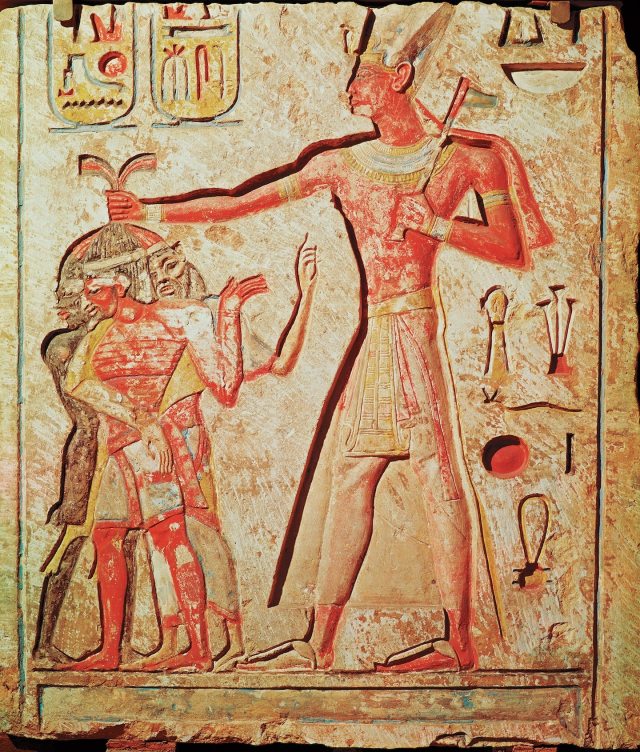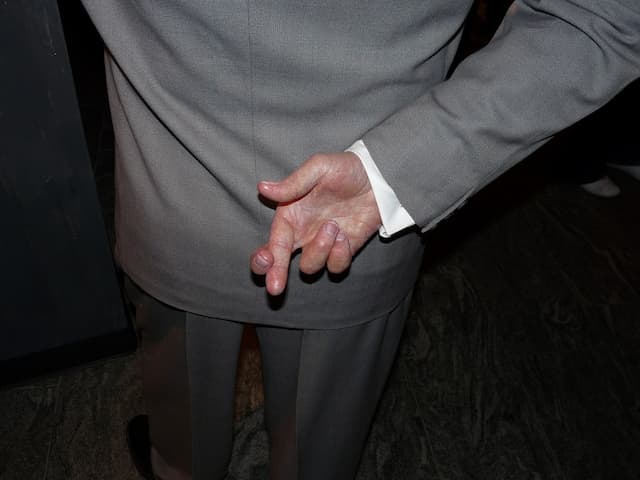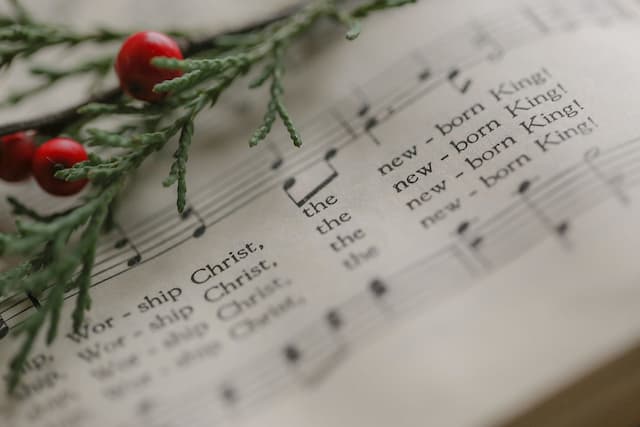Egypt, The Land of the Pharaohs
Most people know about Egypt from watching television, by going to movies, or by reading about some new and exciting discoveries about ancient Egypt. However, to truly appreciate how majestic Egypt is, one must visit Egypt and see the great buildings and monuments ancient Egyptians left behind.
I have been blessed by being able to visit many of the lands mentioned in the Bible. I have visited Israel (three times), Turkey, Greece, and Italy. I have been to the border of Syria and Lebanon and was able, through a fence, to extend my hands into Syrian and Lebanese territories.
I have preached in Jerusalem and baptized in the River Jordan. I preached on Mount Nebo, the place where Moses saw the promised land. I preached in Ephesus, not far away from where Paul preached his sermon. I have been to Corinth and Thessalonica. I have been to Cappadocia, a historical region in Central Anatolia, and have visited the ancient sites of the seven churches of Revelation.
I never believed that I would be able to visit Egypt. Twice I had to cancel a trip to Egypt because of political unrest in the country. However, in January 2019, my wife, my family, and I had the privilege of visiting Egypt, an experience that will never be forgotten.
Ancient Egypt was a very influential nation in antiquity. During most of its history, Egypt was one of the greatest political and military powers in the ancient Near East. The presence of Egypt in the land of Canaan and the oppression of Israel in Egypt play a significant role in the history of Israel.
The history of ancient Egypt goes back to the unification of Upper and Lower Egypt under Narmer, the first king of Egypt. Egyptian history is divided into ten periods. The chronology for the dynasties in Egypt is a matter of debate. Scholars have offered different and contradictory dates for the various periods in Egyptian history. These are the ten periods in Egyptian history:
1. Predynastic Period
2. Early Dynastic Period
3. Old Kingdom
4. First Intermediate Period
5. Middle Kingdom
6. Second Intermediate Period
7. New Kingdom
8. Third Intermediate Period
9. Late Period
10. Greco-Roman Period
The king of Egypt was also known as Pharaoh. The word “Pharaoh” means “Great House,” a reference to the palace where the Pharaoh lived. The Pharaoh was the political and the religious leader of Egypt. The word Pharaoh was used to designate the kings of Egypt during the New Kingdom, beginning with the 18th dynasty.
Scholars have proposed the names of several Pharaohs as the Pharaoh of the oppression. Among those Pharaohs who have been identified as the Pharaoh of the oppression are Queen Hatshepsut, Thutmose II, and Seti I.
Those who accept the late date for the exodus (1260 BCE) agree that Seti I was the Pharaoh of the oppression and that Ramses II was the Pharaoh of the exodus.
Some scholars believe that Merneptah was the Pharaoh of the Exodus. The reason for naming Merneptah as the Pharaoh of the exodus is because the name Israel appears in the Merneptah Stele, the first mention of Israel outside the Bible.
Several Pharaohs are mentioned in the Bible.
In the Book of Genesis, Abraham gave his wife to an unnamed Pharaoh for fear that the Egyptians would kill him because of Sarah. After Pharaoh discovered that Sarah was Abraham’s wife, Pharaoh expelled Abraham and his family out of Egypt.
Joseph interpreted the dreams of an unnamed Pharaoh. Because of what Joseph had done, Pharaoh promoted Joseph and he became a special advisor to Pharaoh. When Joseph’s family came to Egypt, this Pharaoh allowed Joseph’s family to live in the land of Goshen.
In the Book of Exodus there is the mention of an unnamed Pharaoh who did not know Joseph. Because the Hebrews were increasing in numbers, Pharaoh ordered the killing of all boys born to Hebrew women. He put the people of Israel to forced labor.
When this Pharaoh died, Moses returned to Egypt and he confronted the new, unnamed Pharaoh, telling him to allow the people of Israel to leave Egypt. The Pharaoh refused and Yahweh had to intervene to liberate Israel from the servitude in Egypt.
In 1 Kings 3:1 an unnamed Pharaoh gave his daughter in marriage to Solomon to establish a political alliance between the two nations, Later, the Pharaoh conquered the city of Gezer and gave it to his daughter, Solomon’s wife (1 Kings 9:16). Although the name of this Pharaoh is not mentioned in the Bible, scholars believe that Pharaoh Siamun was Solomon’s father-in-law.
During the reign of Rehoboam, king of Judah, (1 Kings 11:40 and 2 Chronicles 12:2), Shishak invaded Israel and Rehoboam paid tribute to him. The Shishak of the Bible is identified with Pharaoh Shoshenq I. He was the founder of the 22nd Dynasty.
1 Kings 11:18–22 mentions a Pharaoh who gave refuge to Hadad at the time Hadad was fleeing from David. This Pharaoh gave Hadad a house, assigned him an allowance of food, gave him land, and he also gave him his sister-in-law for a wife, the sister of Queen Tahpenes (1 Kings 11:18–19). The city of Tahpenes is mentioned in Jeremiah 2:16.
2 Kings 17:4 says that king Hoshea of Israel sent messengers to So, the Pharaoh of Egypt, asking him to send help in his struggle against the king of Assyria. In the chronology of Egyptian kings, no Pharaoh is named So. Most scholars identify Pharaoh So with Pharaoh Osorkon IV.
Pharaoh Tirhakah is mentioned in 2 Kings 19:9 and in Isaiah in 37:9. Tirhakah was a Cushite king who fought against Sennacherib, King of Assyria, during the days of Hezekiah, king of Judah. In Isaiah 37:9, Tirhakah appears as king of Ethiopia.
In the days of Josiah, king of Judah, Pharaoh Neco II came to the aid of Assyria. Neco reigned during the 26th Dynasty. He ruled from 609 to 595 BCE. Josiah fought against Neco at Megiddo and was mortally wounded.
1 Chronicles 4:18 mentions a Pharaoh who gave his daughter Bithiah in marriage to Mered, an Israelite man.
In Jeremiah 44:30, the prophet mentions Pharaoh Hophra. Hophra opposed Nebuchadnezzar, king of Babylon, in the days of the prophet Jeremiah. Jeremiah said that God was going to deliver Hophra into the hands of his enemies. Hophra has been identified with Pharaoh Apries.
Over the years, I have written many posts dealing with the Pharaohs and their consorts. I have also written about Egyptian life and culture. Many of my posts on Egypt deal with archaeological discoveries that shed light on Egyptian life, culture, and practices.
All the posts listed below deal with some facet of Egyptian life and culture. These posts are listed in a reversed chronology. Those posts listed first were the latest posts to be written. The posts listed last, were the first posts to be written.
POST ON EGYPT AND ARCHAEOLOGICAL DISCOVERIES ABOUT EGYPT
The Land of Egypt
The Pharaohs
Ramses and the Battle of Kadesh
Was King Tut the Pharaoh of the Exodus?
Egyptian Life
The Use of Condoms in Ancient Egypt
Gender Representation in Ancient Egyptian Art
The Asiatic Scene at Beni Hasan
Monuments
How the Pyramid of Giza Was Built
Queen Nefertari
Mummification
Animal Mummification in Ancient Egypt
Mummies at the Oriental Institute
Claude Mariottini
Emeritus Professor of Old Testament
Northern Baptist Seminary
NOTE: Did you like this post? Do you think other people would like to read this post? Be sure to share this post on Facebook and share a link on Twitter or Tumblr so that others may enjoy reading it too!
I would love to hear from you! Let me know what you thought of this post by leaving a comment below. Be sure to like my page on Facebook, follow me on Twitter, follow me on Tumblr, Facebook, and subscribe to my blog to receive each post by email.
If you are looking for other series of studies on the Old Testament, visit the Archive section and you will find many studies that deal with a variety of topics.






